Crane Hand Signals – With Pictures
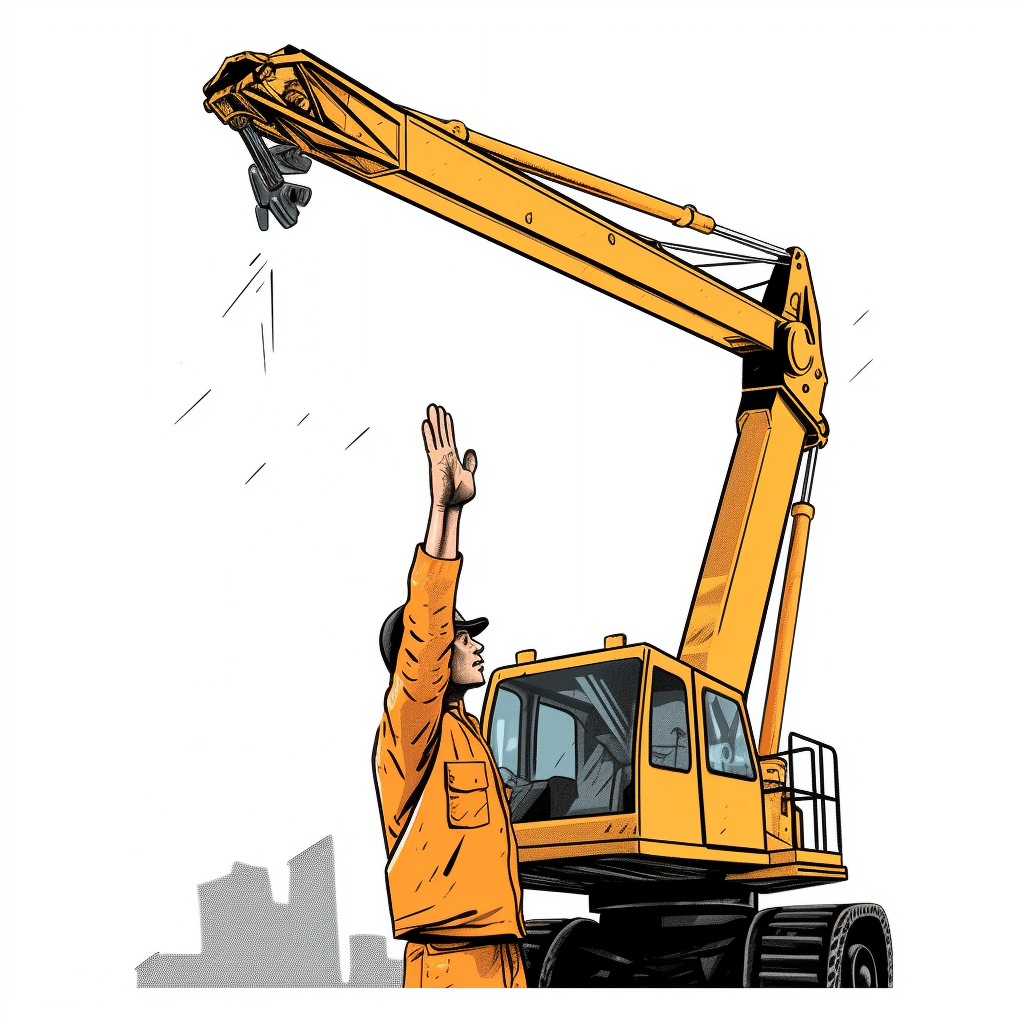
Understanding crane hand signals is vital when working with large construction equipment.
Whether you’re a crane operator or a signal person, understanding crane hand signals can help you and fellow workers stay safe by avoiding accidents and injuries.
You’ve come to the right place if you’re new to crane operation or need a refresher on the different hand signals.
Please continue reading to educate yourself on the standard signals for crane operation. We also offer a full crane safety training program.
Why Use Crane Hand Signals Instead of Voice Signals?
Construction zones are noisy environments with a lot going on in the background. Hearing your coworkers speak is nearly impossible when a job site is busy.
Additionally, the crane operator’s view is often limited, so they need someone who can see for them and signal them on the actions they must take.
Hand signals were created as a low-tech, simple solution for these issues. When a crane operator sees the signal person making gestures, they know what to do.
There are a variety of safety products that can help train individuals on these signals.
Crane Operator Hand Signals Promote Construction Site Safety
With the crane operator’s hand signals, you can help promote construction site safety because workers can easily communicate with each other.
There is clarity about what direction, speed, or action the crane operator should take.
The hand signal person can see everything around the crane, eliminating many potential hazards on the job site to improve safety. (For even more, check out our write-up on Crane Safety Tips).
The Role of a Crane Hand Signal Person
This individual is responsible for acting as the lift director and communicating with the crane operators through hand signals. They indicate what actions to take for the safe operation of the machine.
Each hand signal needs to be well-executed to avoid devastating accidents. One wrong movement could lead to equipment damage or injuries.
Every Signal Person and Crane Operator Should Know These Crane Hand Signals
Because the crane hand signals indicate the actions that should be taken in various situations, every signal person and crane operator needs to know the standard hand signals.
If not, there could be devastating consequences.
What are the hand signals for a crane?
Stop Signals
Stop signals are some of the most important gestures for a signal person and crane operator to learn.
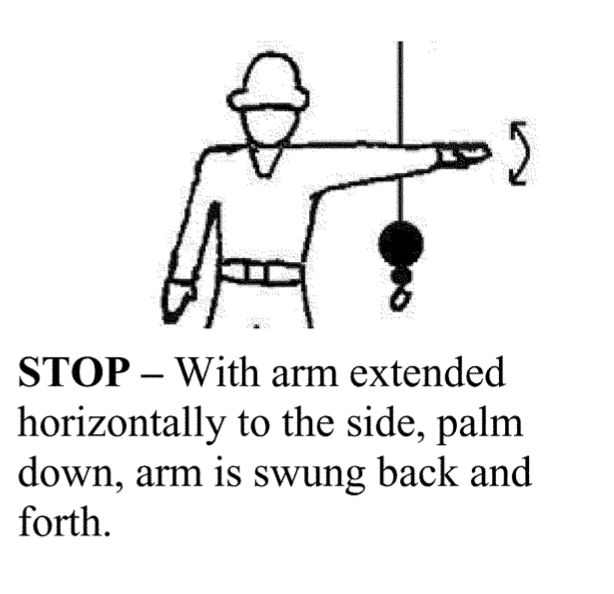
Stop
To signal to stop, stretch one arm out with your palm facing downwards. Then, swing that arm back and forth while touching your chest and back to the side.
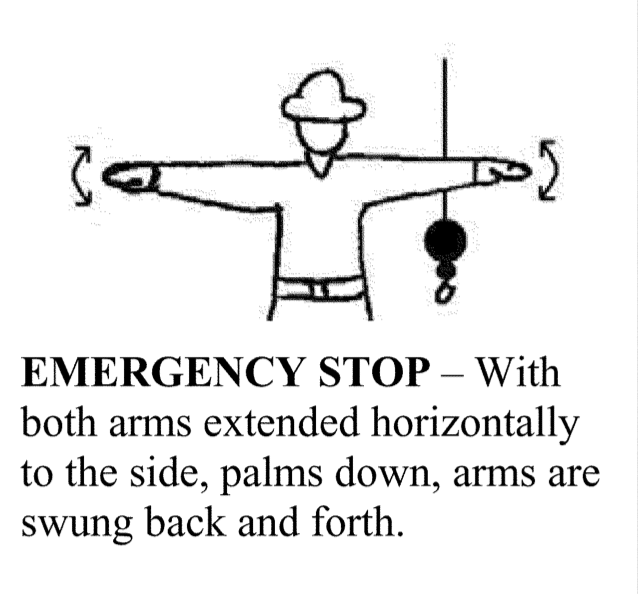
Emergency Stop
The standard method and movement to signal an emergency stop must be executed properly to avoid catastrophe.
For an emergency stop, spread both your arms with your palms faced downward. Then swing your arms to and fro, touching the chest, then back out to the sides.
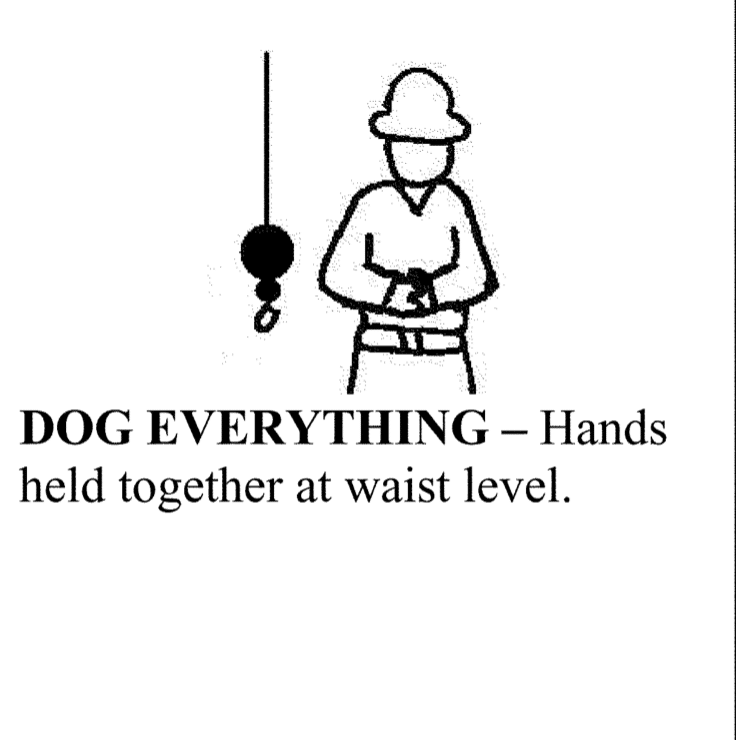
Dog Everything
What does dog everything mean on a crane? It means “pause.”
To signal that a person dog everything, you must clutch both hands together and hold them in front of your belly button at waist level.
Travel Signals
Hand signals help communicate to the crane operator how to direct the crane’s movement safely.
Remember that there are different cranes, such as crawler, telescopic, and locomotive cranes.
Travel for Mobile Cranes
Point your fingers upward with your hand extended out in front of your body, pushing inward and outward in the desired direction.
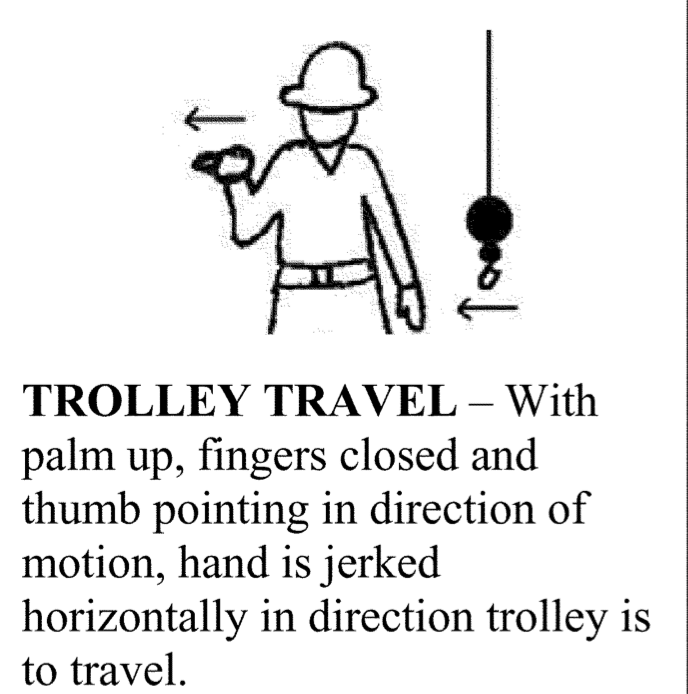
Trolley Travel for Tower Cranes
To indicate trolley travel for tower cranes, point your thumb in the travel direction with your palm facing upward and your other fingers closed in a fist. Then move your thumb back and forth to indicate travel.
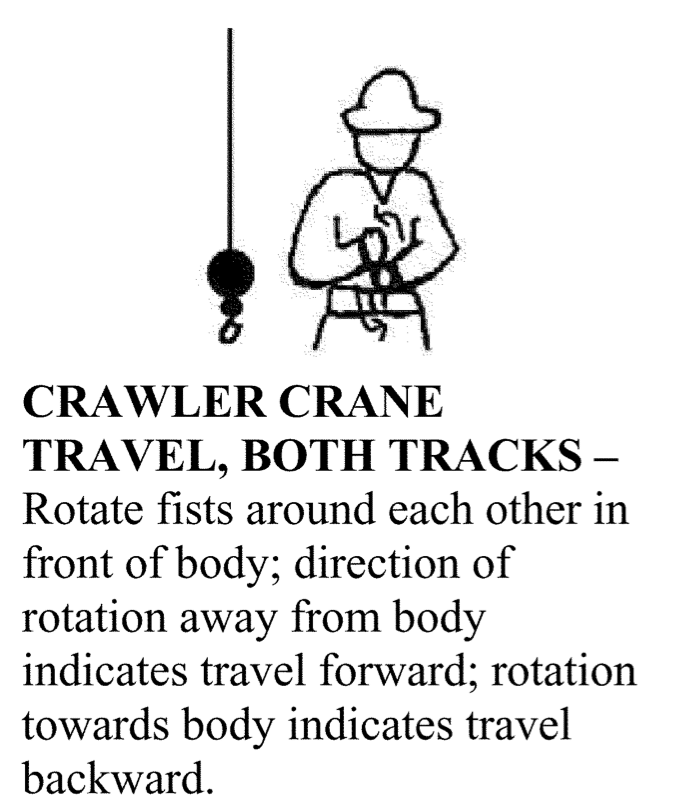
Crawler Crane Travel Both Tracks
To signal for crawler cranes travel (both tracks), spin your hands with your other fingers closed into a fist in front of you.
To indicate forward travel, you must rotate towards yourself. Rotation away from the body indicates backward travel.
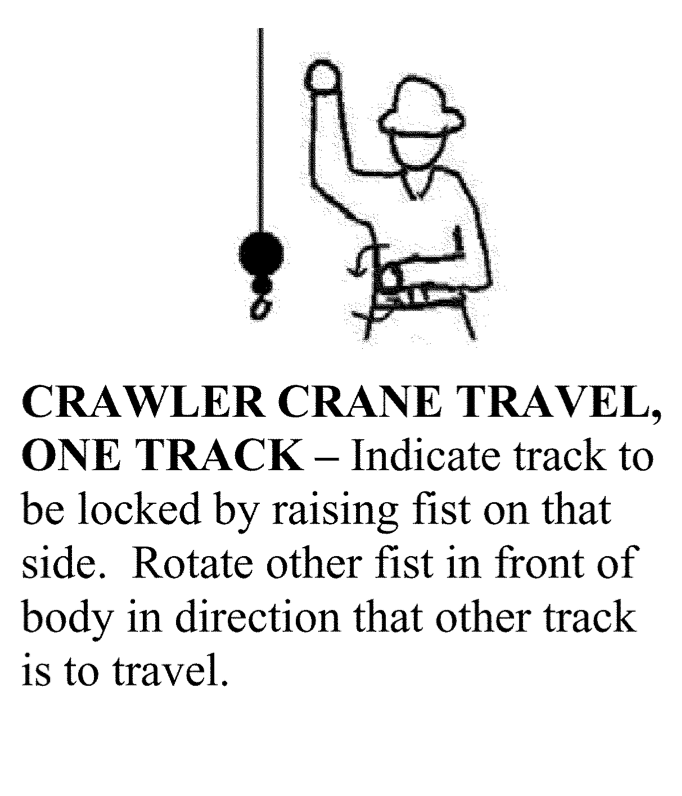
Crawler Crane Travel, One Track
First, you must lift a fist to indicate which track to lock; then spin the other fist in front of your body in small circles to show the pathway of travel.
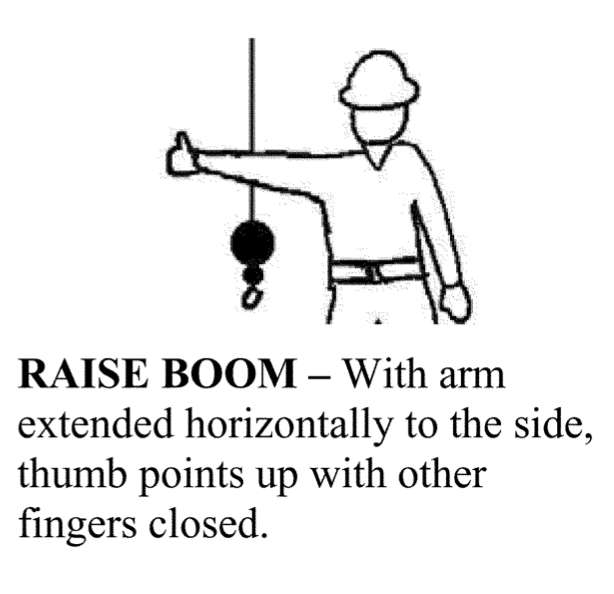
Boom Raise and Lower Signals
The boom is the long arm that extends from the crane. It can be raised and lowered.
You need to do special hoist hand signals to indicate whether the crane operator should raise or lower the boom.
Crane Signals Related to Raise or Lower Load with a Hoist
When a crane contains heavy loads, the operator needs to know what to do with them.
Load signals tell the operator whether to lift or lower the load using the main hoist or auxiliary hoist. The crane’s hoist is a long chain with a hook; this part links to the load.
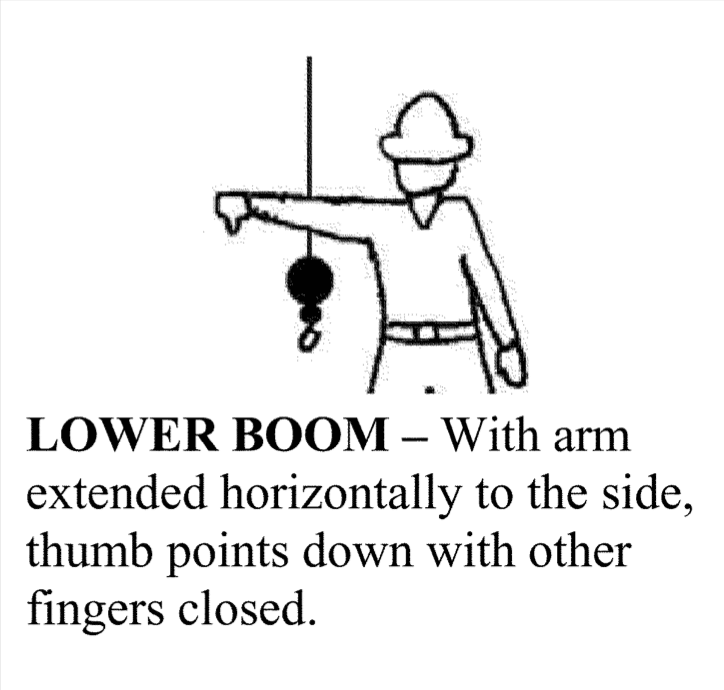
Lower Boom
What does a thumbs down mean to a crane operator? It has to do with the boom.
To signal to lower the boom, stretch your arm out and point your thumb down with your fist closed.
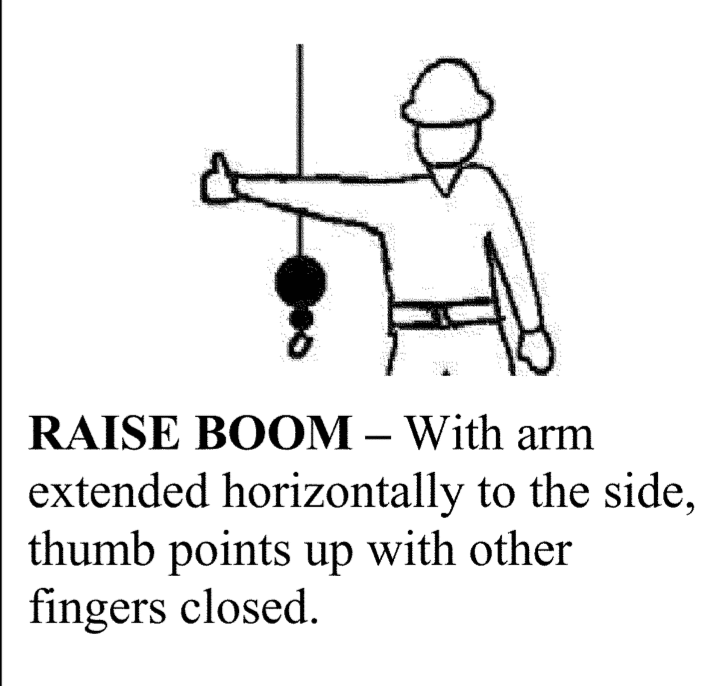
Raise Boom
To raise the boom, stretch out one arm and point your thumb up with a closed fist.
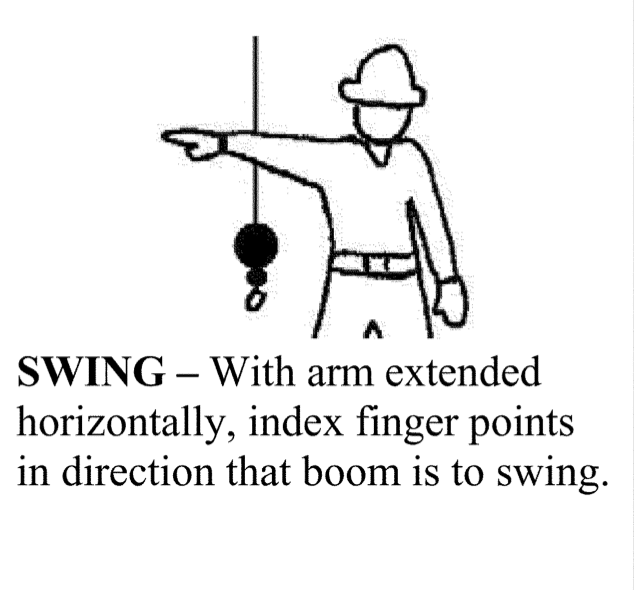
Swing Boom
To tell the operator to swing the boom, you need to stretch your arm outward, then point your index finger in the direction it should swing.
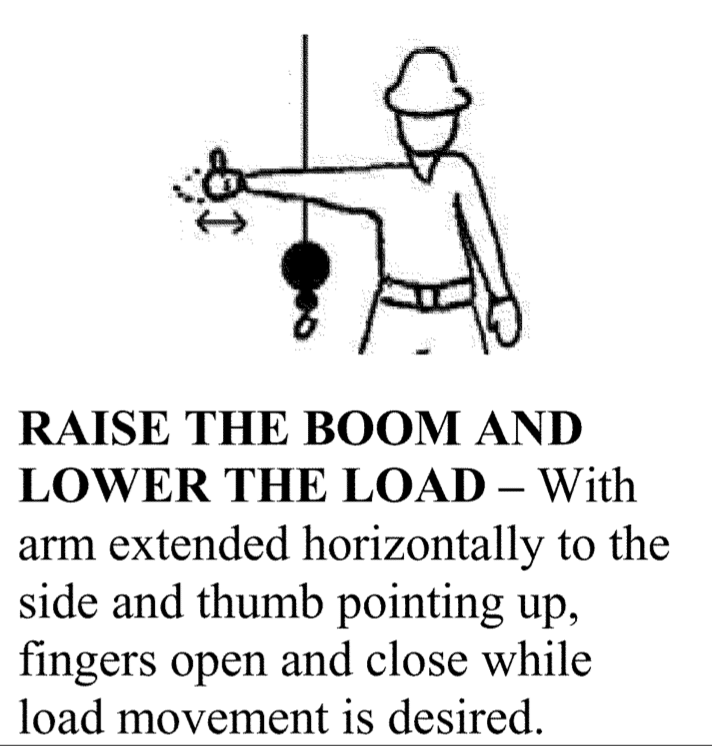
Raise Boom and Lower Load
Lifting and lowering the boom will change the load radius. Therefore, you may need a combination of commands to stay within secure operational boundaries.
You can let the crane operator know to raise the boom and lower the load by stretching out a single arm with your thumb pointing up while opening and closing your remaining fingers.
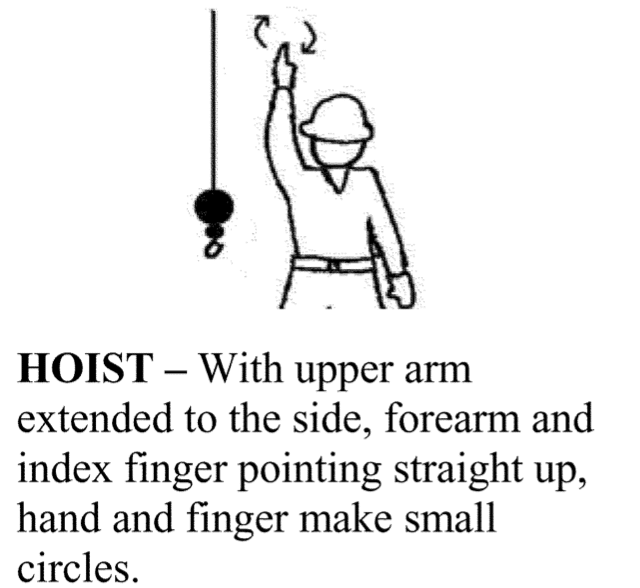
Hoist Load Hand Signal
To use the main hoist for the load, stretch your arm vertically, point your index finger toward the sky, then make small clockwise motions with the finger.
Lower Boom and Hoist Load signals
To have the crane operator lower the boom and hoist the load, you must reach your arm horizontally (thumb pointing down) and open and close your remaining fingers.
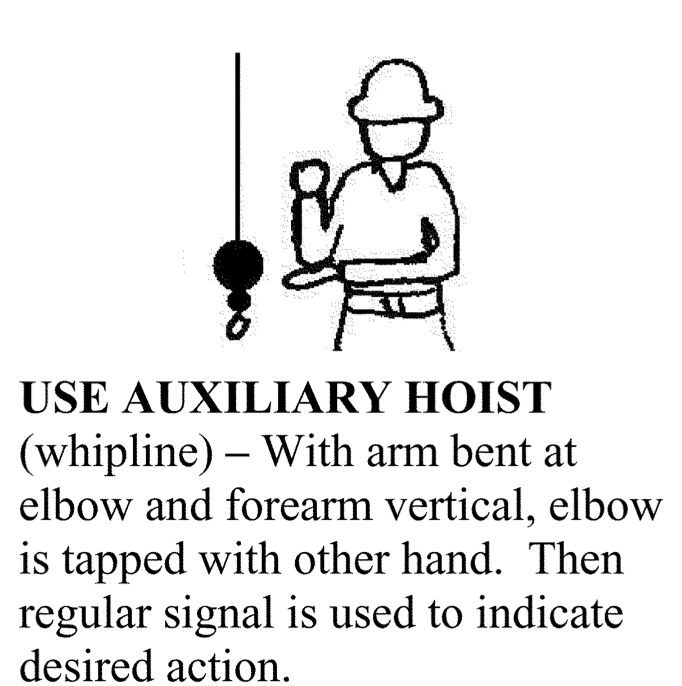
Use Auxiliary Hoist
With your bent at your elbow and your forearm vertical, tap your elbow with your other hand. Then use the regular signal to indicate the desired action.
Speed Signals
Sometimes the signal person must indicate that the operator should move slowly.
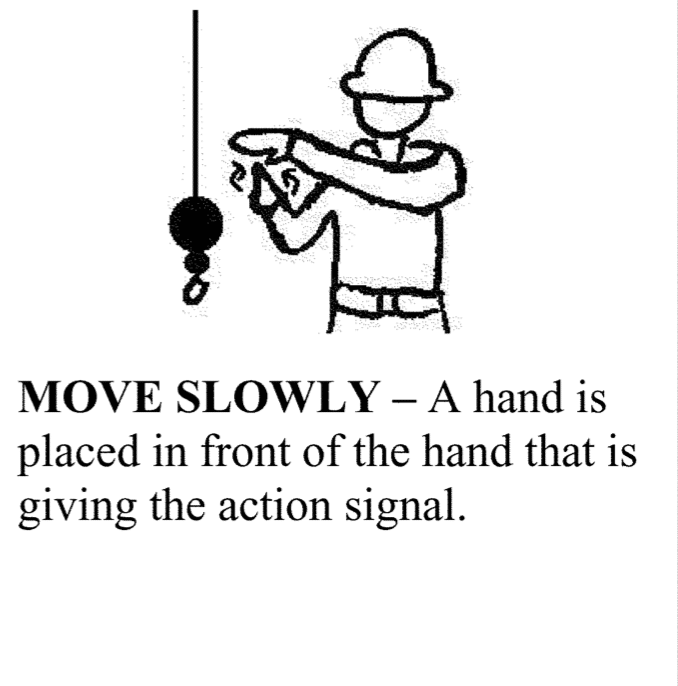
Move Slowly
To let the operator know to move slowly with the equipment, you must place your other hand above the hand and arm, giving the action signal.
Telescopic Cranes
Telescopic cranes can retract or extend boom lengths. Due to this special feature, they have special hand signals.
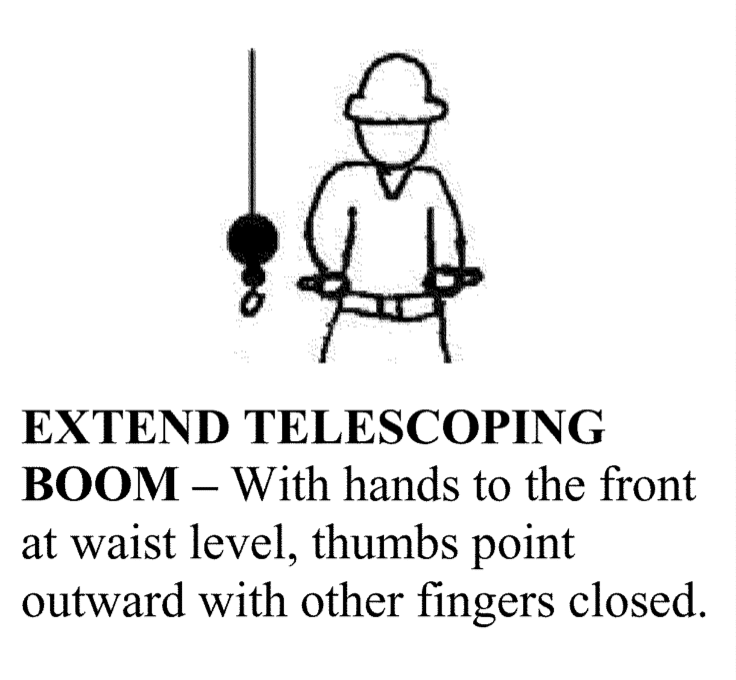
Extend Telescope
To let the operator know to extend the boom, place your hands at waist level and point your thumbs outward (with closed fist).
Retract Telescope
When you want them to retract the boom, place your hands at waist level and point the thumbs in with your fists closed.
Crane Hand Signals: Final Thoughts
Study and practice each hand signal to ensure you can do them properly. Remember, everyone’s safety (including yours) depends on your understanding of them.
It’s important to refresh your memory often to remain on top of your game.